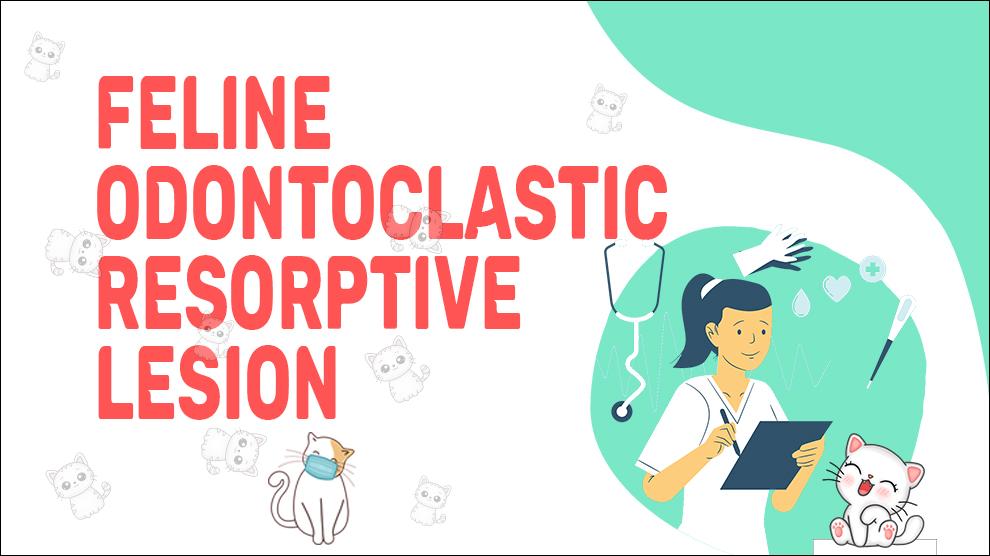What Is Feline Odontoclastic Resorptive Lesion?
Feline Odontoclastic Resorptive Lesion (FORL), also known as feline tooth resorption, is a common dental disease in cats that affects their teeth.
It is a painful condition that can cause discomfort and loss of teeth if left untreated.
Clinical Signs Of Feline Odontoclastic Resorptive Lesion
The symptoms of FORL can be subtle and difficult to detect, especially in the early stages of the disease.
However, as the condition progresses, the following symptoms may become more noticeable:
- Drooling
- Pawing at the mouth
- Difficulty eating or refusing to eat
- Bad breath
- Bleeding from the mouth
- Swelling of the face
- Tooth discoloration or mobility
- Lack Of Appetite
- Weight Loss
- Difficulty Chewing
- Difficulty Swallowing
- Vomiting
- Changes In Behavior
- Dark Red Gums
- Spasm Of Jaw Muscles
- Difficulty Moving The Jaw
- Trembling Jaw
- Excessive Saliva
Treatment Options For Feline Odontoclastic Resorptive Lesion
The treatment for FORL usually involves removing the affected tooth or teeth.
This is typically done under general anesthesia, and the cat will require pain medication and antibiotics afterward to manage pain and prevent infection.
In some cases, root canal therapy may be an option to save the tooth, but this is not always possible or practical.
After the procedure, the cat may need to eat soft or moist food for a few days until the mouth heals.
Home Remedies For Feline Odontoclastic Resorptive Lesion
There are no known effective home remedies for treating FORLs. It is important to seek veterinary care for your cat if you suspect they may be experiencing dental problems.
How To Prevent Feline Odontoclastic Resorptive Lesion?
Preventing FORL is largely about maintaining good dental hygiene in your cat.
This includes regular teeth brushing with a cat-specific toothbrush and toothpaste, as well as annual dental checkups with your veterinarian.
Additionally, feeding your cat a high-quality diet that is low in carbohydrates and high in moisture can help promote good dental health.
Affected Cat Breeds Of Feline Odontoclastic Resorptive Lesion
While FORL can affect any breed of cat, certain breeds, such as Siamese cats and Abyssinians, may be more prone to developing the disease.
Causes For Feline Odontoclastic Resorptive Lesion
Causes:
The exact cause of FORL is not known, but it is believed to be related to a combination of genetic, environmental, and dietary factors.
Some studies suggest that certain breeds, such as Siamese and Abyssinians, may be more prone to developing FORL.
Poor dental hygiene, including a lack of regular teeth brushing and dental checkups, may also increase the risk of developing FORL.
Additionally, a diet that is high in carbohydrates and low in moisture may contribute to the development of FORL.
When To See A Vet For Feline Odontoclastic Resorptive Lesion?
If you notice any of the symptoms of FORL in your cat, it is important to see a veterinarian as soon as possible.
Early detection and treatment can help prevent the disease from progressing and causing further damage to your cat's teeth and mouth.
Food Suggestions For Feline Odontoclastic Resorptive Lesion
Feeding your cat a balanced and appropriate diet may help to prevent dental disease, but it is not a guarantee.
Once the dental disease is present, extractions may be necessary regardless of diet.
Some veterinarians may recommend dental diets or dental chews as a preventative measure, but it is important to speak with your veterinarian before making any changes to your cat's diet.
Conclusion
FORLs are a painful and relatively common dental condition in cats.
While the exact cause of the condition is not well understood, regular dental check-ups and cleanings, as well as feeding a balanced and appropriate diet, may help to prevent dental disease from progressing to the point of requiring extractions.
If your cat is diagnosed with FORLs or any other dental condition, prompt treatment is important to manage discomfort and prevent further progression of the disease.











